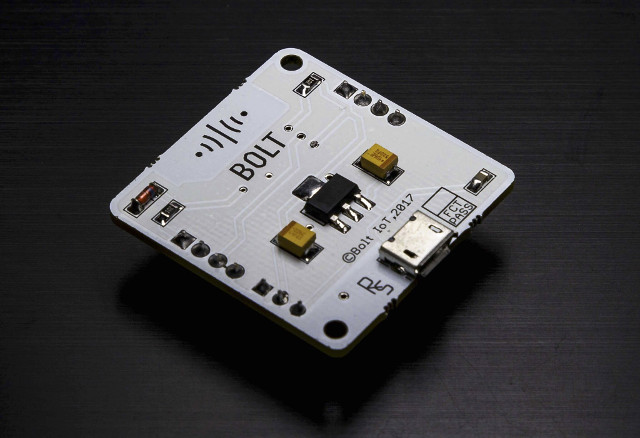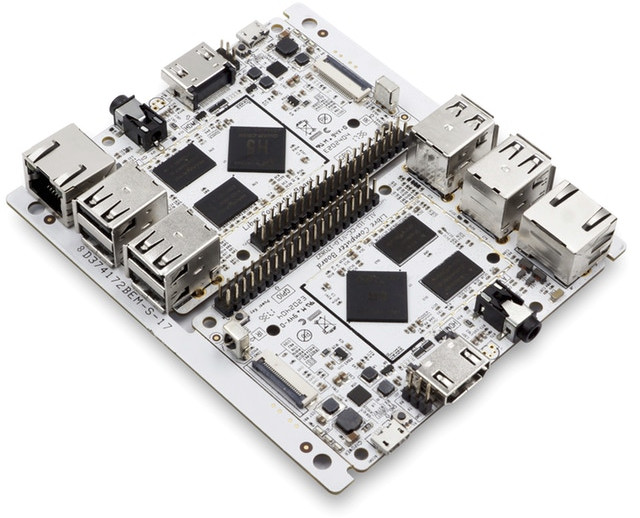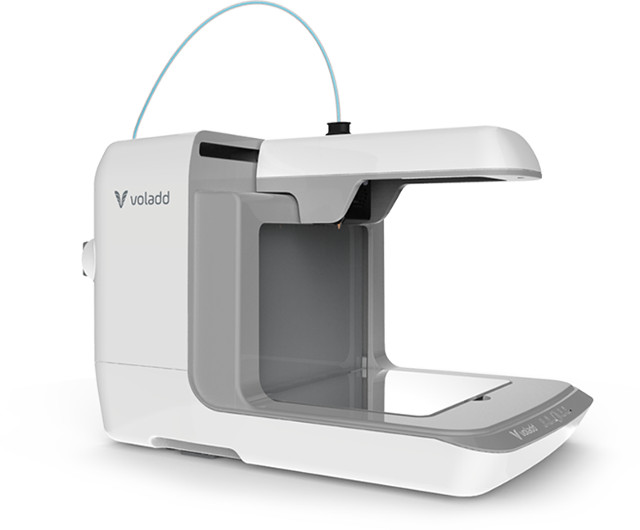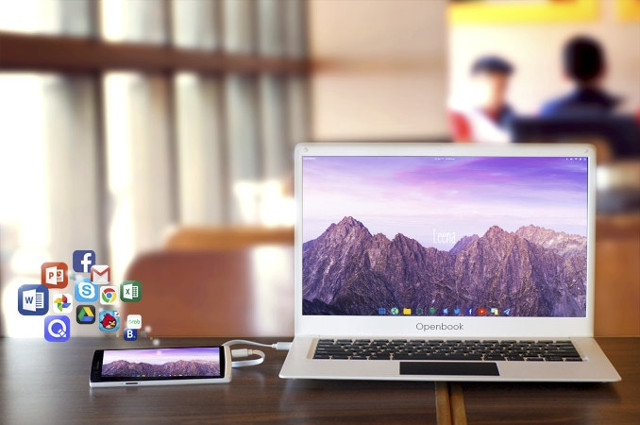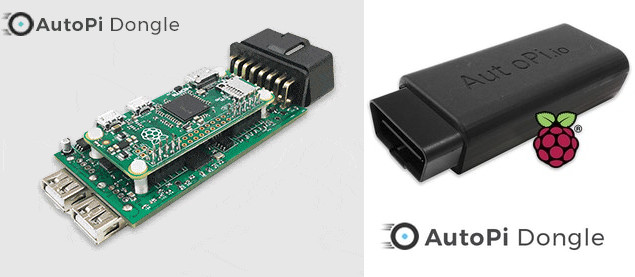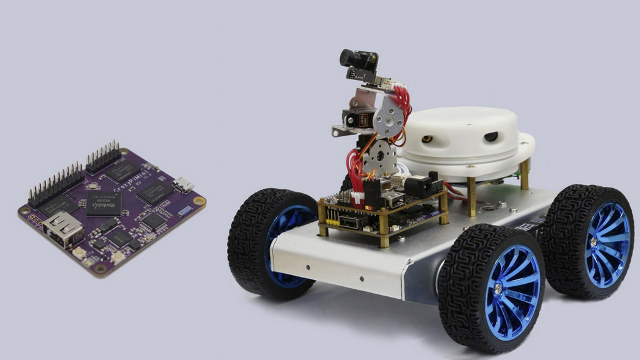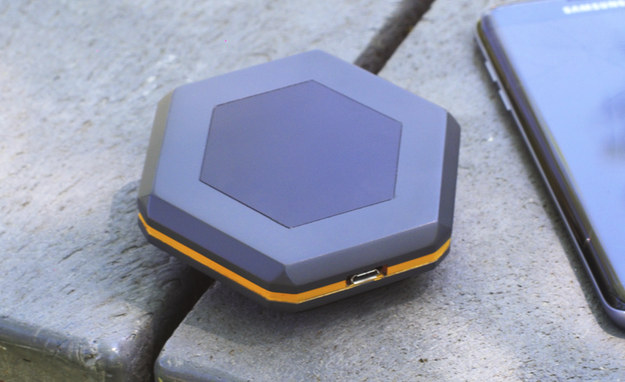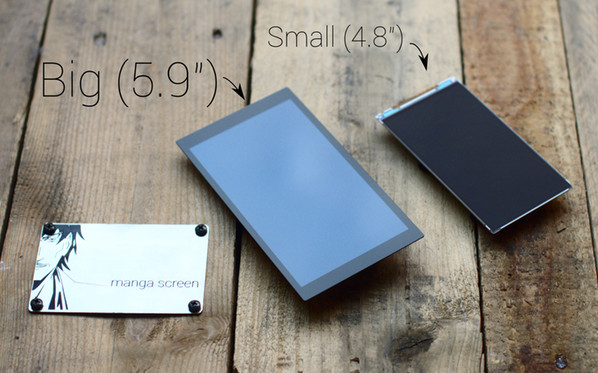There are plenty of hardware to implemented IoT projects now, but in many cases a full integration to get data from sensors to the cloud requires going though a long list of instructions. Bolt IoT, an Indian and US based startup, has taken up the task to simplify IoT projects with their IoT platform comprised of ESP8266 Bolt WiFi module, a cloud service with machine learning capabilities, and mobile apps for Android and iOS. Bolt IoT module hardware specifications: Wireless Module – A.I Thinker ESP12 module based on ESP8266 WiSoC Connectivity – 802.11 b/g/n WiFi secured by WPA2 USB – 1x micro USB for power and programming Expansion – 4-pin female header and 7-pin female header with 5 digital I/Os, 1x analog I/O, and UART Misc – Cloud connection LED The hardware is not the most interesting part of Bolt IoT, since it offers similar functionalities as other ESP8266 boards. […]
$9+ Libre Computer Tritium Allwinner H2+/H3/H5 SBCs Leverage Raspberry Pi 3 Form Factor (Crowdfunding)
A few months ago, Libre Computer introduced Le Potato board (aka AML-S905X-CC) powered by Amlogic S905X processor plus up to 2GB RAM, and using Raspberry Pi 3 form factor. The company is now back with three Tritium boards, using the same form factor, but instead powered by Allwinner H2+, H3, or H5 processors, with a lower price point as the Tritium IoT board (H2+ / 512 MB RAM) goes for $9 only. Tritium boards (ALL-H3-CC) specifications: SoC and Memory Tritium IoT – Allwinner H2+ quad core Cortex A7 processor with Mali-400MP2, 512MB DDR3 Tritium 1GB – Allwinner H3 quad core Cortex A7 processor with Mali-400MP2, 1GB DDR3 Tritium 2GB – Allwinner H5 quad core Cortex A53 processor with Mali-450MP4, 2GB DDR3 Storage – 1x micro SD Card slot, eMMC module connector Video & Audio Output Tritium IoT – HDMI up to 1080p60, AV port Tritium 1GB & 2GB – HDMI 1.4 […]
Voladd Cloud-Connected Linux 3D Printer is Powered by BeagleBone Black Board (Crowdfunding)
So far, all of the 3D printers that have been reviewed on this blog require you to design or download a 3D object on your computer, and print it from an SD card. But thanks to OctoPrint software and cheap ARM Linux developments boards, it has become possible to add a Linux computer with webcam to remotely start and control the 3D printer for a few dozens dollars. Karl has even released an OctoPrint image for Orange Pi Lite board. Voladd 3D printer already embeds a Linux board, namely the BeagleBone Black running Debian, which allows the 3D printer to be easy to use since no software installation is required. You can start printing by selecting an object in a web browser or an app in your smartphone, and they’ve also taken steps to eliminate/reduce maintenance tasks, such as the inclusion of a filament cartridge. Voladd 3D printer specifications: Internal […]
Cloud Media Openbook is Another Smartphone Laptop Docking Station (Crowdfunding)
Cloud Media (previously Syabas) is better known for their OpenHour and HourPopcorn Hour TV boxes, but the company also has a close relationship with Pine64 company, and helped them make Pinebook laptop powered by an Allwinner A64 ARM processor. They’ve now used their experience, and likely some parts, from the ARM laptop to create Openbook, a 14″ laptop dock for Android smartphones. Openbook specifications: USB Monitor SoC – DisplayLink DL-4000 Series USB 3.0 to LVDS/eDP SoC Storage – micro SD card slot Display – 14″ TN LCD with 1366 x 768 resolution QWERTY Keyboard + Large Multi-Touch Touchpad USB – USB 3.0 host port, USB port to connect to mobile phone Audio – Headphone Jack, stereo speaker, microphone Battery – 10,000 mAh Lithium Polymer Battery Power Supply – 5V/3A (DC Jack: Type H 3.5mm OD/1.35mm ID barrel ‘coaxial’ type) Dimensions – 329mm x 220mm x 12mm (W x D x H) […]
AutoPi is a 4G & GPS OBD-II Dongle Based on Raspberry Pi Zero W Board (Crowdfunding)
We’ve previously covered Macchina M2 OBD-II dongle based on an Arduino compatible MCU, and with 4G LTE support for the maker market, and iWave Systems OBD-II dongle with 4G LTE and LTE running Linux on NXP i.MX6 for the B2B market, but so far I had not seen an hackable OBD-II dongle running Linux for the maker market. AutoPi dongle fills that void as it is based on Raspberry Pi Zero W board, runs Raspbian with Autopi software (AutoPi Core), supports 4G LTE, GPS, etc,.. and connects to your car’s OBD-II socket. AutoPi dongle specifications: SoC – Broadcom BCM2835 ARN11 Core processor @ up to 1 GHz System Memory – 512MB LPDDR2 SRAM Storage – 8GB micro SD card Cellular Connectivity 4G Cat 1 modem with 3G/EDGE fallback working worldwide (but region locked) 4G bands – Region specific 3G fallback (WCDMA) – B1, B2, B4, B5, B8 EDGE fallback – […]
CrazyPi Board Runs Ubuntu and ROS on Rockchip RK3128 SoC for Robotics & IoT Projects (Crowdfunding)
CrazyPi is a maker board powered by Rockchip RK3128 quad core Cortex A7 processor that can take various magnetically connected modules such as LIDAR, gimbal, 4G LTE, etc.., and runs both Ubuntu and ROS (Robot Operating System) for DIY robotics & IoT projects. CrazyPi main board specifications: SoC – Rockchip RK3128 quad core Cortex A7 processor @ 1.2 GHz with ARM Mali GPU MCU – ARM Cortex-M3 @ 72 MHz System Memory – 1GB DDR3L @ 1066 MHz Storage – 16GB eMMC flash pre-loaded with Ubuntu and ROS Connectivity – 802.11 a/b/g/n WiFi @ 150 Mbps, Bluetooth 4.0 USB – 1x USB 2.0 host port Expansion Headers – Two headers with a total of 36-pin exposing 1x HDMI, 1x speaker, 1x microphone, 3x PWM, 1x I2C, 1x UART, 1x SPDIF, 1x SPI, 1x USB Power Supply – 5V via micro USB port ? Dimensions – Smaller than credit card The […]
Sonnet is a Rugged Portable Device Creating Mesh Networks for Smartphones
Cellular networks are available in most places, but not always, and you may not have connectivity while climbing mountains or other remote locations, when going abroad, during natural disaster, in very crowded places where network capacity is exceeded, or when your government decides to cut it off for “national stability and harmony”. Wouldn’t it be great if you were still able to contact with your friend in such cases, and create your own mesh networks expanding over several kilometers? That’s exactly what Sonnet does by connecting to your smartphone over WiFi, and to other Sonnet nodes over ISM frequencies (433, 868 and 925 MHz). Sonnet hardware specifications: Connectivity 802.11 b/g/n WiFi with up to 20 dBm (max varies per country); WPA/WPA2 security Long Range RF Frequencies 915 MHz (North America) 868 MHz (Europe) 433 MHz (Asia Pacific) Distance – 5km typ.; up to 10km Line-of-sight; SMA connector available to extend […]
Manga Screen 2 is Smartphone Touchscreen Display with USB and HDMI Ports for Makers (Crowdfunding)
Most touchscreen displays aimed to be connected to a development board work through a display interface such as MIPI DSI or LCD RGB (and USB or I2C for touch support), and come with somewhat low resolution such as 800×480 which can be suitable for HMI applications. They also often don’t work with all boards due to the different interfaces used, and there’s no way to easily connect such small display to your computer. Taking those limitations into account, and since most boards and computers come with HDMI and USB ports, Elias Bakken and his team have added HDMI and USB ports to two smartphone displays, and Manga Screen 2 was born. The two displays – made by Sharp – have the following hardware specifications: Big (5.9”) Small (4.8”) Resolution 1920×1080 1280×720 FPS (max) 60 57 Color mode 24-bit PPI 376.2 307.9 Brightness 400 cd/m2 500 cd/m2 Contrast ratio 1000:1 800:1 […]


